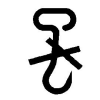| Poppy seed | [German version] |
Table of contents |
|
| General: | ||
| Product information | ||
| Packaging | ||
| Transport | ||
| Container transport | ||
| Cargo securing | ||
Product information
Product name
| German | Mohnsaat |
| English | Poppy seed |
| French | Graines de pavot |
| Spanish | Semilla de amapola |
| Scientific | Papaver somniferum |
| CN/HS number * | 1207 91 ff. |
(* EU Combined Nomenclature/Harmonized System)
Product description
Poppy seeds are the oil-containing seeds found in the pods of the poppy Papaver somniferum, which belongs to the Papaveraceae family; the pods contain large numbers of small white, gray or bluish seeds. They are approx. 1 – 1.5 mm long, 1.1 mm wide and 0.9 mm thick. Poppy varieties with closed capsules are preferred, as the pores beneath the discoid stigma do not open, so minimizing losses during harvest.
Oil content:
| 42.5 – 50.8% [1] | |
| 45 – 50% [11] |
Quality / Duration of storage
The most favorable shipping time is generally shortly after harvest; the year of harvest should therefore be ascertained before loading is begun, to avoid transporting excessively old goods.
Intended use
Poppy seeds are used in the food industry, pharmaceutics and as a feedstuff, but their most important use is as an oil-bearing fruit: when cold-pressed, poppy seed produces a good edible oil.
Figures
(Click on the Figures to enlarge them.)
 Figure 1 |
 Figure 2 |
Countries of origin
This Table shows only a selection of the most important countries of origin and should not be thought of as exhaustive.
| Europe | Central Europe |
| Africa | |
| Asia | South-East Asia, Middle East, Iran, Asia Minor |
| America | |
| Australia |
Back to beginning
Packaging
Poppy seed is transported as break-bulk cargo in bags of woven natural materials (e.g. jute) or woven plastic bags. The very small poppy seeds easily penetrate the fabric of the bags and, since there is a risk of bleeding, they are packaged in double-layer bags or in bags of particularly tightly woven fabric.
| Marking of packages | ||
 Keep dry |
 Use no hooks |
 Keep away from heat (solar radiation) |
Back to beginning
Transport
Symbols
 General cargo |
Means of transport
Ship, truck, railroad
Container transport
Ventilated containers (coffee containers), if the lower limits set for the water content of goods, packaging and container flooring and the oil content of the goods are complied with.
Cargo handling
In damp weather (rain, snow), the cargo must be protected from moisture, since it may lead to mold, spoilage and self-heating as a result of increased respiratory activity.
Hooks must not be used in handling bagged goods as they subject the cargo to point loads, so damaging the bags. Due to their shape, plate or bag hooks apply an area load and are thus more suitable for handling bags.
Stowage factor
| 1.70 m³/t (double-layered jute fabric bags, 100 kg) [1] | |
| 1.95 – 2.01 m³/t (bags) [11] |
Stowage space requirements
Cool, dry, good ventilation
Segregation
Fiber rope, thin fiber nets
Cargo securing
Bagged cargo must be stowed and secured in the means of transport in such a manner that it cannot slip or shift during transport. If loss of volume and degradation of quality are to be avoided, the packages must not be damaged by other articles or items of cargo.
Back to beginning
Risk factors and loss prevention
RF Temperature
Poppy seed requires particular temperature, humidity/moisture and ventilation conditions (SC VII) (storage climate conditions).
Favorable travel temperature range: 5 – 25°C [1]
Temperatures > 30°C should not prevail for an extended period, as such temperatures promote respiration of the cargo and may cause self-heating. The cargo should not be stowed near sources of heat and particularly not above heated double bottom tanks.
Back to beginning
RF Humidity/Moisture
Poppy seed requires particular temperature, humidity/moisture and ventilation conditions (SC VII) (storage climate conditions).
| Designation | Humidity/water content | Source |
| Relative humidity | 70% | [1] |
| Water content | 8.2% | [1] |
| Maximum equilibrium moisture content | 65% | [1] |
Poppy seed must be protected from all forms of moisture (seawater, rain and condensation water), since moisture promotes hydrolytic/enzymatic fat cleavage, which then results in self-heating due to increased respiration.
Back to beginning
RF Ventilation
Poppy seed requires particular temperature, humidity/moisture and ventilation conditions (SC VII) (storage climate conditions).
Recommended ventilation conditions: air exchange rate at least 10 changes/hour (airing)
It is advisable to stow so as to leave trenches, so that, where necessary, water vapor and heat may be removed by suitable ventilation measures.
Back to beginning
RF Biotic activity
Poppy seed displays 2nd order biotic activity.
It is a living organ in which respiration processes predominate, because its supply of new nutrients has been cut off by separation from the parent plant.
The fat decomposition which takes place during the course of hydrolytic/enzymatic fat cleavage increases the risk of the cargo undergoing self-heating, possibly ultimately resulting in a cargo fire.
Back to beginning
RF Gases
In poppy seed, metabolic processes continue even after harvesting. The poppy seeds absorb oxygen and excrete carbon dioxide (CO2).
Respiration may cause life-threatening CO2 concentrations (TLV: 0.49 vol.%) or O2 shortages in the hold/container. Therefore, before anybody enters the hold, it must be ventilated and a gas measurement carried out.
Back to beginning
RF Self-heating / Spontaneous combustion
Oil content:
| 42.5 – 50.8% [1] | |
| 45 – 50% [11] |
Poppy seed’s elevated oil content encourages its tendency towards self-heating.
Because of its tendency to self-heating/spontaneous combustion, poppy seed may behave like substances from Class 4.2 of the IMDG Code.
Fat decomposition in poppy seed leads to the risk of self-heating and, finally, to a cargo fire.
Fat decomposition may proceed as follows:
| by hydrolytic/enzymatic fat cleavage or | |
| by oxidative fat cleavage |
Hydrolytic/enzymatic fat cleavage:
If the critical water content of poppy seed is exceeded, this promotes hydrolytic/enzymatic fat cleavage. Fat-cleaving enzymes are activated by the elevated water content. The additional action of light and heat may accelerate this process. Free fatty acids sometimes have an unpleasant odor and taste. In the event of extended storage or improper cargo care, these cause the cargo to become rancid.
The free fatty acids formed are consumed by respiration processes in the poppy seed to form carbon dioxide and water, a process which is associated with considerable evolution of heat.
Self-heating of poppy seed is an extremely vigorous process, as the consumption of fatty acids by respiration processes is associated with a considerably greater evolution of heat than is the case with the respiration equation for carbohydrates. Here too, as with cereals, the spoilage process proceeds in a type of chain reaction, because heat and water are formed by the fatty acids consumed by respiration, which in turn contribute to an intensification of the process.
The self-heating of poppy seed requires only a small seat of moisture, so that within just a few hours heating may occur at moist points for which weeks or months would be required in goods dry on shipment.
Fresh poppy seed with a high water content tends towards rapid self-heating and may also ignite. Self-heating of poppy seed leads not only to a reduction in the utility value of this product (rancid odor and taste) but also has a qualitative and quantitative effect on oil yield. The color and bleachability of the oils are also negatively affected. The oil obtained complicates refining of the crude oils in subsequent processing, because a higher free fatty acid content makes decolorization substantially more difficult.
Hydrolytic/enzymatic fat cleavage and respiration may be limited by low temperatures; however, this may only be affected to a limited degree during transport. It is therefore important to ensure storage stability by complying with the limit values for the water content of the goods.
Oxidative fat cleavage:
Food components frequently react with atmospheric oxygen in spoilage reactions. Atmospheric oxygen may enter into an addition reaction with unsaturated fatty acids through the simultaneous assistance of light, heat and certain fat companion substances, and possibly also traces of heavy metals. It is therefore absolutely essential to store poppy seed in the dark and to protect it from oxygen and metal parts, since otherwise it becomes brown-colored and develops a rancid odor and taste.
Back to beginning
RF Odor
| Active behavior | Poppy seed has a very slight, pleasant odor. |
| Passive behavior | Poppy seed is sensitive to strong foreign odors. |
Back to beginning
RF Contamination
| Active behavior | The high oil content of the goods frequently causes dark fat stains to appear on the bags, which must therefore be kept from coming into contact with goods sensitive to contamination, such as baled goods, tea chests, marble etc.. Poppy seed in bags must not be stowed together with fibers or fibrous materials, either, since oil-impregnated fibers accelerate self-heating processes. The bags must not bleed, and care must be taken to ensure that the seeds do not become mixed with other seeds. |
| Passive behavior | Poppy seeds are sensitive to dirt, fats and oils. The holds or containers must accordingly be clean and in a thoroughly hygienic condition before loading. |
Back to beginning
RF Mechanical influences
Point loads applied for example by hooks may result in damage (tears) to the bags and thus to losses of volume. Plate or bag hooks, which, due to their shape, distribute the load and reduce the risk of damage, should thus be used.
Back to beginning
RF Toxicity / Hazards to health
Respiration may cause life-threatening CO2 concentrations (TLV: 0.49 vol.%) or O2 shortages in the hold/container. Therefore, before anybody enters the hold, it must be ventilated and a gas measurement carried out.
Back to beginning
RF Shrinkage/Shortage
Torn bags may lead to slight losses in volume.
Back to beginning
RF Insect infestation / Diseases
Typical pests of oil-bearing seeds/fruits are, for example, merchant grain beetles, peanut weevils, sawtoothed grain beetles, flour beetles, meal moths, dried fruit moths and mites, which may cause depreciation and weight losses.
Back to beginning
